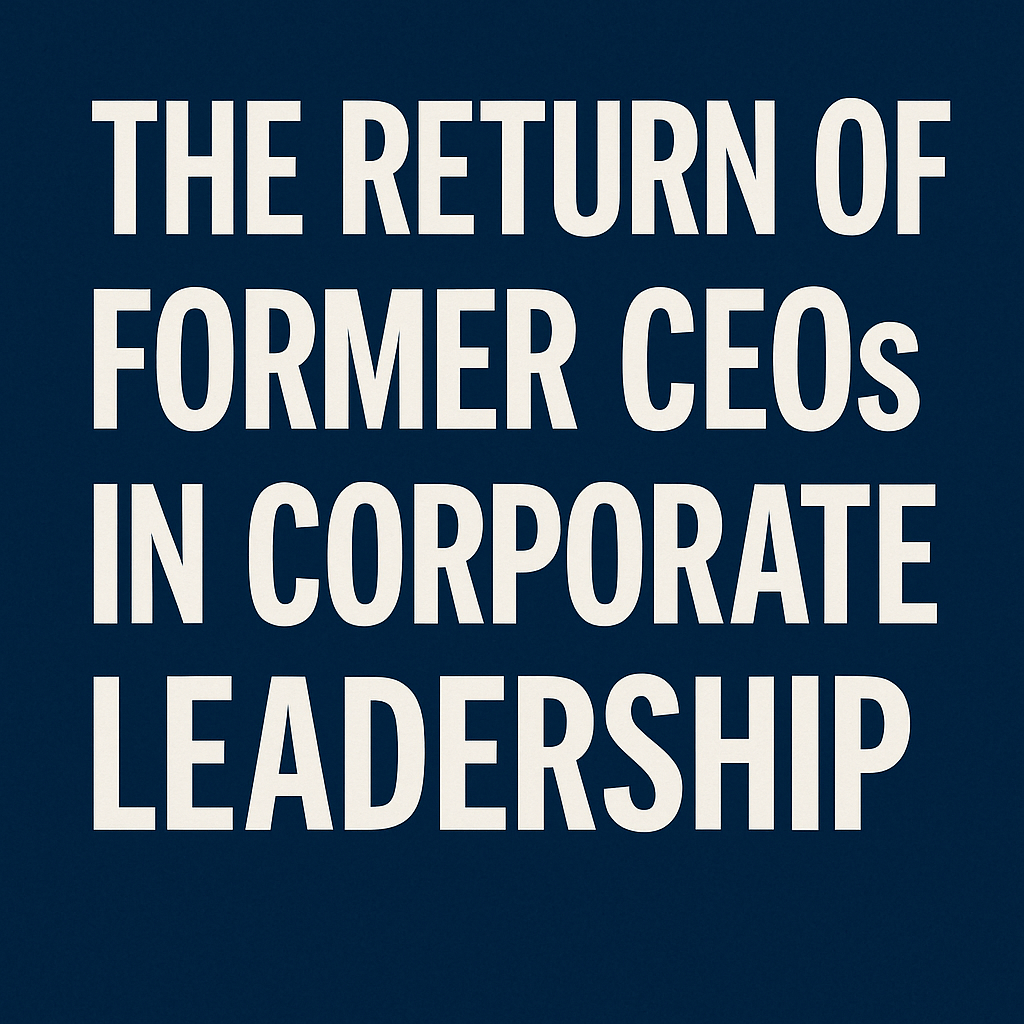The Return of Former CEOs in Corporate Leadership

Boards of directors hold the ultimate responsibility for selecting—and, when necessary, replacing—their chief executive. Yet in recent quarters, a growing number of firms have turned back the clock, rehiring former CEOs to guide them through turbulent times. This trend, often dubbed the “boomerang CEO” phenomenon, reflects both the pressures of today’s market environment and the challenge of identifying leaders equipped for tomorrow.
Why Companies Bring Back Former CEOs
- Zero Learning Curve: Returnee CEOs can hit the ground running. They possess intimate knowledge of the firm’s organizational structure, key stakeholders and operational processes.
- Investor Reassurance: In volatile markets—marked by rapid shifts in interest rates, supply‐chain disruptions and geopolitical tensions—a familiar leader can stabilize stock performance and investor sentiment. Institutional investors often track CEO tenure versus total shareholder return (TSR) over rolling five‐year windows; rehiring a known quantity can arrest downward TSR trends.
- Interim Stabilization: When a board’s succession pipeline is underdeveloped, a boomerang CEO serves as a bridge. This can be crucial when leadership gaps coincide with activist hedge fund pressure or sudden executive departures.
Recent High-Profile Examples
- Vail Resorts: In May 2024, the board reappointed Rob Katz, Vail’s former CEO (2006–2015), after Kirsten Lynch’s departure. Lynch’s tenure saw a 12-week ski-lift labor strike and a 3% drop in same‐resort skier visits, leading a minority investor to push for change.
- UnitedHealth Group: Stephen Hemsley, who led UnitedHealth from 2006 to 2017, returned shortly after CEO Andrew Witty stepped down. The company had reported a 5% decline in quarter-over-quarter revenues and faced a U.S. DOJ Medicare fraud probe.
- Novo Nordisk: Declining sales growth in GLP-1 therapies prompted the board to recall Lars Rebien Sørensen in an advisory role, as it searches for a successor to Lars Fruergaard Jørgensen.
Risks and Limitations of the Boomerang Strategy
Despite the apparent benefits, reappointing a former CEO carries inherent risks:
- Succession Planning Backslide: It may signal that the board’s long-term leadership development process failed to produce capable internal candidates. Effective succession planning involves competency matrices, bench‐strength assessments, and scenario-based leadership simulations.
- Outdated Playbooks: Past strategies may not translate to new challenges—AI integration, ESG disclosure requirements under EU CSRD or carbon border adjustment mechanisms, and hybrid/remote workforce management.
- Talent Attrition: Senior executives vying for elevation can become demoralized and exit, accelerating brain drain. Human capital flight can erode the firm’s intangible asset valuations.
“When you go backward, you are reaching back to someone who was successful under different market conditions,” says Deb Rubin, head of board, CEO and teams at RHR International. “Their playbook might still be applicable, but it might not.”
Quantitative Evaluation of Boomerang CEO Performance
A University of North Carolina study tracking 6,000 CEOs over 20 years found that boomerang CEOs underperform first-time CEOs by approximately 1.2% in annualized total shareholder return. The gap widens when the returning leader is also a founder, potentially due to overreliance on legacy networks and historical decision matrices.
- Performance Metrics: Key performance indicators (KPIs) include compound annual growth rate (CAGR), return on invested capital (ROIC), and earnings per share (EPS) growth. Boards should benchmark these metrics against peer groups and S&P 500 medians.
- Risk-Adjusted Returns: Using metrics such as the Sharpe ratio or Jensen’s alpha can reveal whether a boomerang CEO truly enhances risk-adjusted value creation or merely coincides with market rebounds.
Governance Mechanisms and Risk Assessment
Boards can mitigate the pitfalls of rehiring by strengthening governance protocols:
- Independent Evaluation Committees: Tasked with assessing boomerang candidates via 360° feedback, psychometric profiling and external peer reviews.
- Clawback Provisions: Embedding provisions in the CEO contract that recover bonuses if long-term targets—such as three-year ROIC thresholds or ESG KPIs—aren’t met.
- Dynamic Succession Modeling: Employing AI-driven predictive analytics to simulate leadership scenarios under various macroeconomic and industry‐specific stress tests.
Future Trends: AI and Data-Driven Succession
As artificial intelligence and machine learning advance, boards are increasingly using algorithmic tools to identify high‐potential leaders. Advanced talent analytics platforms can process performance reviews, leadership competencies and cultural fit scores to produce a ranked candidate list. However, overreliance on algorithmic outputs may overlook intangible qualities—empathy, strategic vision and stakeholder persuasion—that often define successful CEOs.
Conclusion
The boomerang CEO phenomenon underscores the tension between stability and forward-looking succession. While firms like Vail Resorts and UnitedHealth have turned to known leaders to navigate near‐term crises, boards must carefully weigh the risks: diluting long‐term leadership pipelines, applying outdated strategies and alienating emerging talent. Ultimately, a balanced approach—blending interim returnees with robust internal development and data-driven talent assessment—may offer the most resilient path forward.